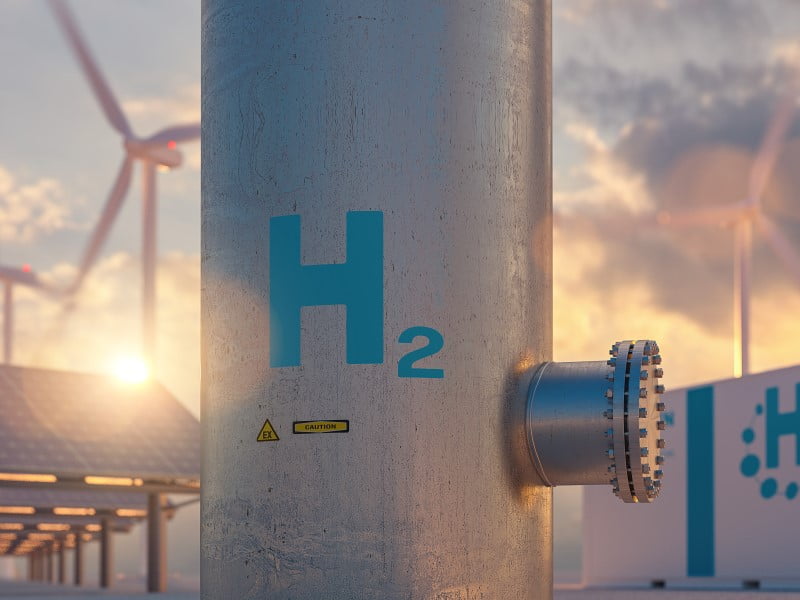Consultation on the design of the federal government’s flagship hydrogen production credit scheme has begun, with the $2 billion fund to support at least two large-scale projects.
Announced in this year’s federal budget, the production credit scheme, dubbed Hydrogen Headstart, aims to accelerate development of the renewable hydrogen industry by supporting local manufacturing opportunities and knowledge sharing.
Successful projects will receive production credits over a 10-year period to cover the cost difference between the production cost per kilogram of “hydrogen produced from renewables and the sales price of that hydrogen or its derivative products”.
According to the consultation paper, released alongside a separate consultation on the government’s next hydrogen strategy on Friday, expressions of interest could open as early as October 2023.
At least two large scale projects will be supported, with the aim to reach 1GW of electrolyser capacity in Australia by 2030.
As part of the qualification criteria for the program, any project to receive funding will need to meet knowledge sharing requirements with the broader Australian hydrogen industry.
Australia’s pipeline of hydrogen projects is currently in the range of $230 billion to $300 billion, representing the “largest number of announced renewable hydrogen plants worldwide as of 2022”, according to the REN21 2023 Global Renewables Resources report.
However, as of 2022 only 10MW worth of projects had reached final investment decision, a fraction of those in the European Union and the United States.

Projects must be a “new deployment of electrolysis/renewable hydrogen production facilities” powered entirely by renewable energy generation, with carbon intensity to be verified by the incoming Guarantee of Origin scheme.
The consultation paper explicitly excludes blue hydrogen, which is “hydrogen produced using coal gasification or steam methane reforming coupled with carbon capture and storage technology”.
United States-based think tank, the Institute for Energy Economics and Financial Analysis, earlier this week published analysis that questioned the commercial viability of a Victorian blue hydrogen project backed by the Japanese government.
Proposals under Hydrogen Headstart will also need to provide an estimate of the total volume cap of hydrogen produced over the 10-year period.
Although no minimum production level is being proposed, funding may be terminated if production ceases over an extended period.
Less than the headline $2 billion may be paid out if the projects applying are deemed to be of insufficient merit.
The consultation will close on August 3, ahead of the consultation on the National Hydrogen Strategy, which closes on August 18.
The strategy consultation paper poses 34 questions, including a focus on developing domestic manufacturing capabilities to support the sector, highlighting the “critical” importance of “timely access to electrolysers and fuel cells”.
Advice on whether prioritising the production of ammonia using green is “the most prospective way to achieve both hydrogen industry growth and industrial decarbonisation in the short-term” is also sought.
Some of the other domestic uses of green hydrogen flagged in the strategy include replacing natural gas in industrial processes, sustainable aviation fuel production, green iron and steel production, transport, and the replacement of diesel generators.
Adoption of national hydrogen production and demand targets is also considered. This has been put in place in several jurisdictions including the United States, Japan, South Korea, the European Union, and China.
At the state level, the New South Wales government has set a 2030 stretch target of installing 700MW of electrolyser capacity and produce 110,000 tonnes of green hydrogen production by 2030.
The Western Australian government has set a target to generate one per cent of electricity along its main grid from green hydrogen by 2030.
There is no mention of the previous federal government’s production cost stretch target of $2 per kilogram of clean or renewable hydrogen.
An update to the National Hydrogen Strategy was first agreed by Australian Energy ministers at the end of February to respond to hydrogen industry developments in other jurisdictions. The government expects hydrogen to “contribute between 10 to 33 per cent of global and Australian emissions reductions”.
Consultation on the DCEEW developed national strategy closes on August 18.
Do you know more? Contact James Riley via Email.

